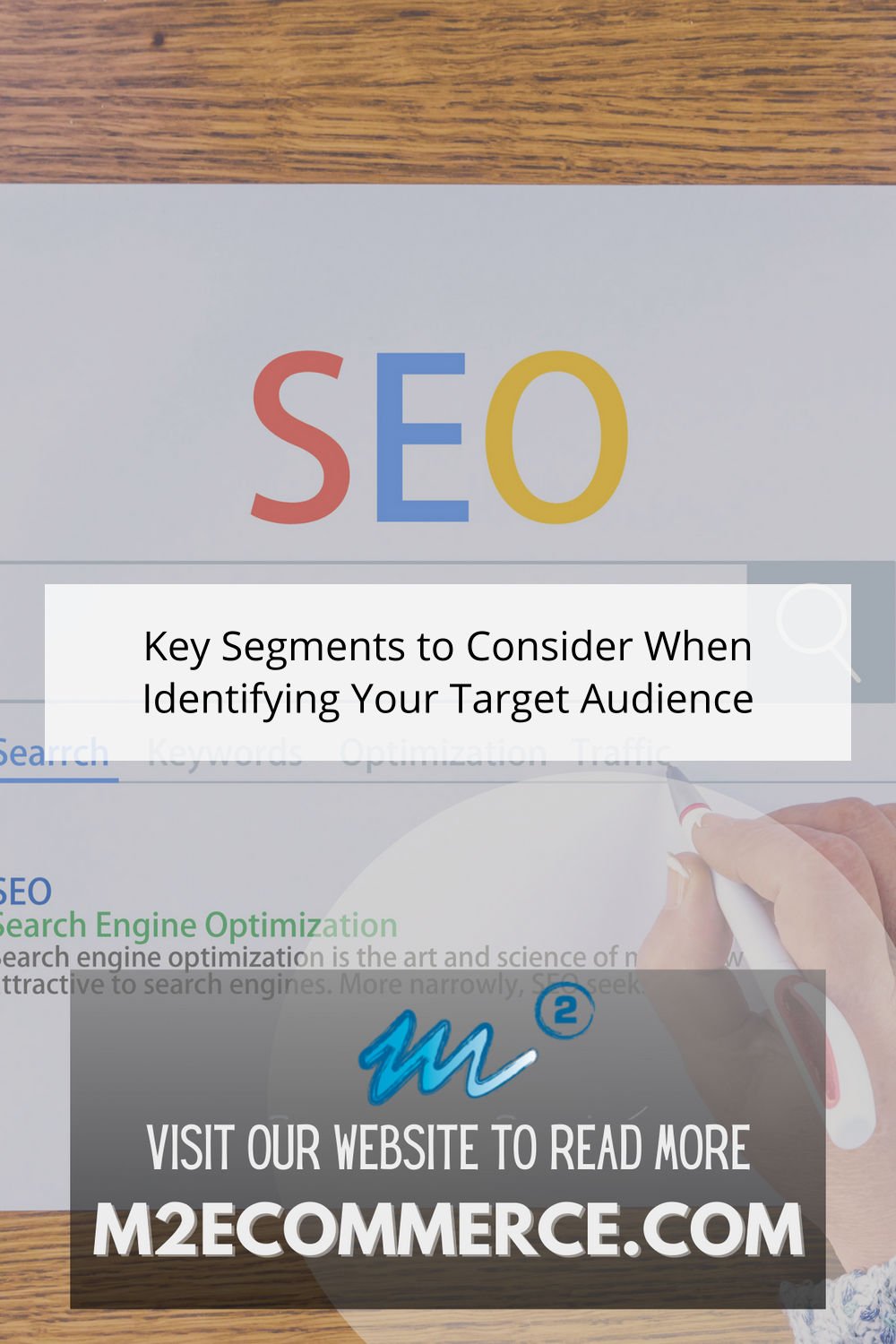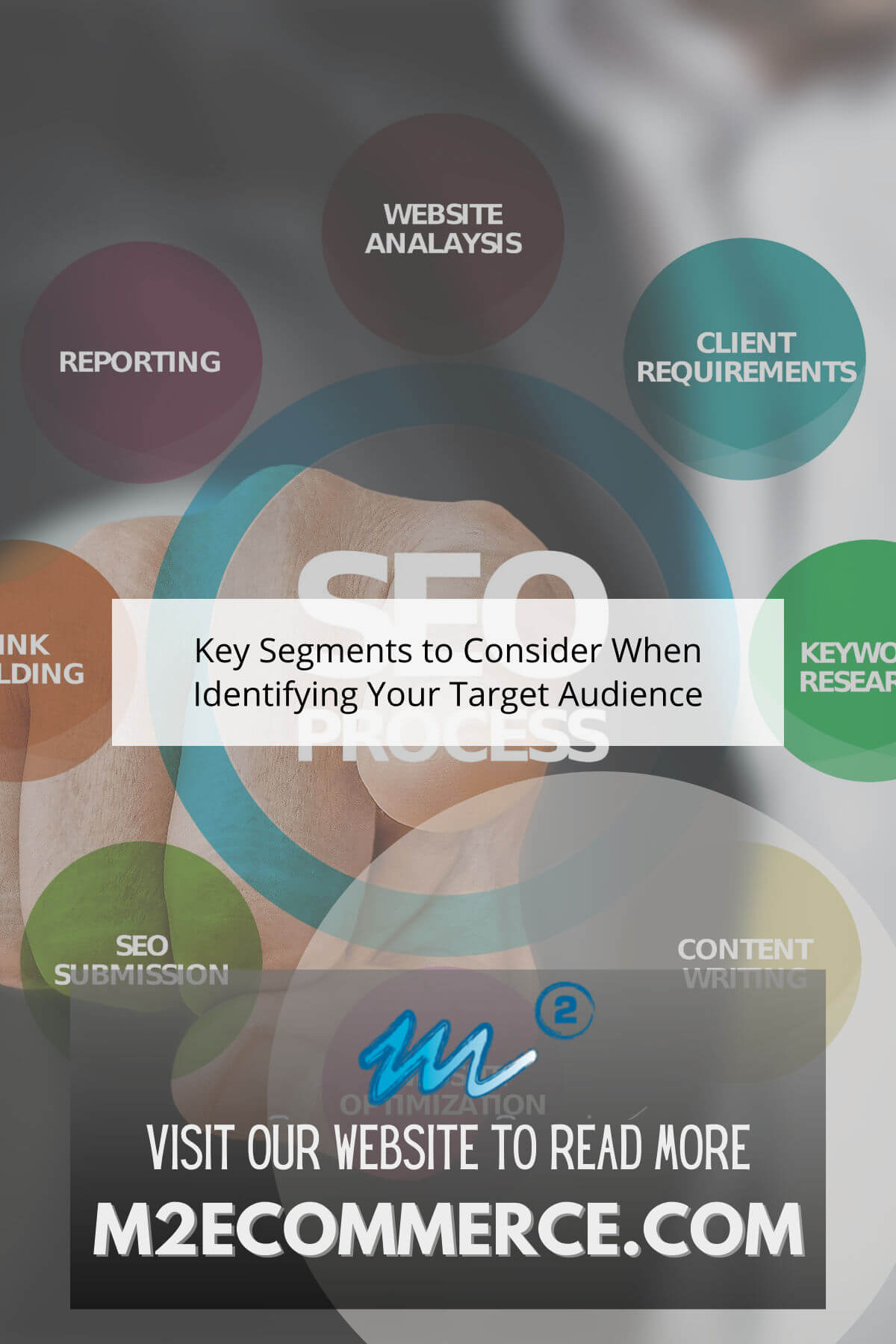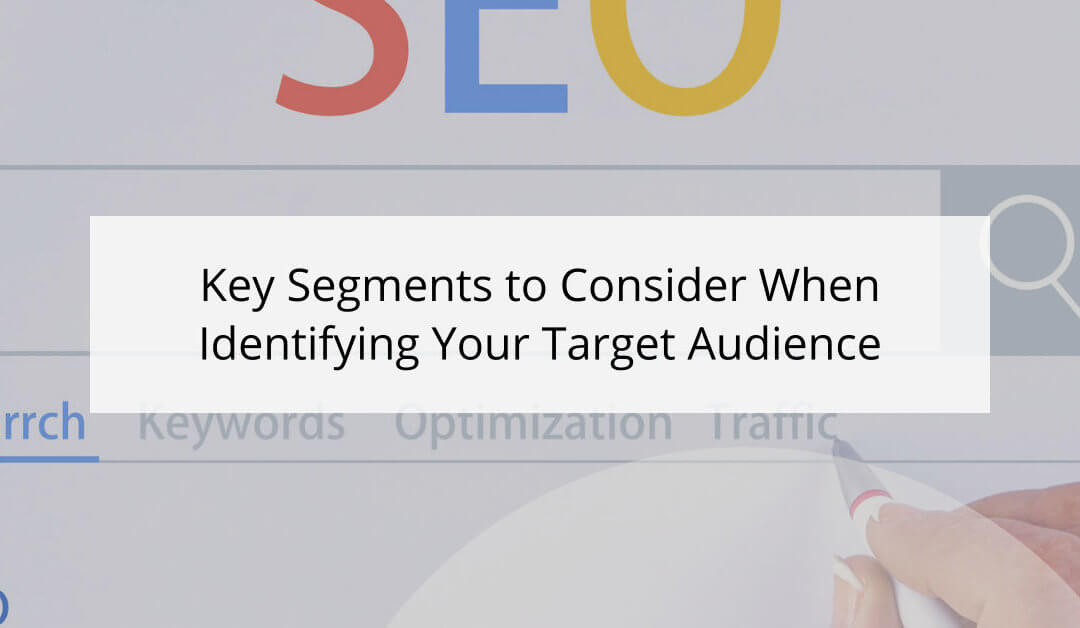Identifying your target audience is essential for any successful marketing campaign. It can be overwhelming to consider all the possible key segments you should focus on, so we’ve put together this guide to help make the process easier.
We’ll walk you through the different elements of identifying your target audience and provide tips on how to zero in on who you should be targeting with your message. With this information, you’ll be able to create a powerful and effective marketing campaign that speaks directly to those who are most likely to engage with your product or service.
You have full control over the success of your business – and that starts with knowing exactly who it is you should be talking to. Using the right data-driven insights, you can discover which key segments are likely to respond positively to your message.
You’ll be empowered by having an understanding of who makes up your target audience, what motivates them, and where they spend their time online. Let’s get started!
Demographic Characteristics
People’s personalities, passions, and pursuits pave the path to identifying the right target audience. When attempting to define a primary demographic, it is important to consider networking preferences, lifestyle choices, and other influencing factors.
The first step in defining your target audience is understanding the various demographic characteristics of potential customers. This includes looking at data such as age range, gender distribution, income range, location, marital status, education level and occupational background. By using this information to get an idea of who your audience predominantly consists of you can begin to paint a clearer picture of who is most likely to be interested in what you are offering.
It’s also important to take into account how these demographics interact with each other. Are there any correlations between age and spending habits? How does marital status affect the way people use technology? Does income level determine if someone is more likely or less likely to adopt new trends?
Answering questions like these will provide greater insight into your potential customer base and help you identify which segments are more likely to be interested in your product or service. With this knowledge in hand you can begin strategizing ways on how best to reach them.
By diving deeper into each segment’s preferences and habits psychographic characteristics become easier to discern allowing for even more targeted messaging that resonates with each individual customer.
Psychographic Characteristics
Now we move onto psychographic characteristics, which are the psychological attributes that influence how people live and make decisions. These characteristics can provide insight into a target audience’s values and interests, as well as their lifestyle choices.
Understanding psychographics is essential for any successful content strategy. Here are three key elements to consider:
1. Cultural Values: Cultural values refer to the beliefs and customs that shape a person’s behavior and decisions. What do they prioritize? How do they view success? How does their culture define morality?
2. Lifestyle Choices: Lifestyle choices reflect a person’s preferences, interests, habits, and activities. What kind of hobbies do they have? How often do they shop or travel? What kind of products or services are they interested in?
3. Consumer Habits: Consumer habits help marketers understand how customers interact with the brands they use on a regular basis. Where do they shop and why? What kind of products do they buy most often? Are there certain brands or services that are preferred over others?
By understanding these key psychographic traits, marketers can gain valuable insights into their target audiences’ wants, needs, and motivations – all essential components for crafting an effective content strategy. With this knowledge in hand, it’s time to look at another relevant segment – geographic location.
Geographic Location
Geographic location can be a powerful indicator when it comes to determining the target audience for a product or service. By geo clustering, businesses can accurately identify the distinct regions of their target market and tailor their marketing strategies accordingly.
This type of regional marketing allows companies to gain an understanding of how local cultures, climates, and economic conditions may influence consumer behavior in different parts of the world. Analyzing geographic trends helps businesses determine which regions are most likely to be interested in their product offering.
Through this information, companies can focus their resources on those places where there is the greatest potential for success. By understanding the locations that generate the most demand, businesses can also make strategic decisions about pricing, distribution channels, and promotional activities. Additionally, identifying geographic patterns can provide insights into customer loyalty and purchasing habits.
Knowing which areas are more likely to repeat purchase or encourage word-of-mouth referrals can help companies create effective loyalty programs and maximize marketing ROI. As such, analyzing geographical data is essential for any business looking to build strong relationships with its customers and increase sales.
With this knowledge in hand, marketers can adjust their campaigns accordingly and ensure they are reaching the right customers at the right time in the right place. With that said, let’s now turn our attention to exploring behavioral patterns within our target audience.
Behavioral Patterns
‘Actions speak louder than words.’ This adage is especially true when it comes to understanding consumer behavior. Understanding the behavioral patterns of your target audience can be invaluable in developing a successful marketing campaign.
One key way to identify the behavioral patterns of your target audience is by studying their brand loyalty. How likely are they to buy a product repeatedly? Do they have an affinity for certain brands over others? Answering questions like these can help you understand what motivates them to buy and make better marketing decisions.
Another important factor in recognizing consumer behavior is income level. People with higher incomes may be more likely to purchase luxury goods, while those with lower incomes may gravitate towards more affordable products. By understanding how much money a person has at their disposal, you can better tailor your messaging and product offerings to meet their needs and wants.
By taking into account both brand loyalty and income level, you can get a better picture of how people are likely to behave when it comes to purchasing habits. Knowing this information can help you create more effective campaigns that engage customers on an emotional level, driving greater sales and customer loyalty in the long run.
Purchasing Habits
Understanding the purchasing habits of your target audience is essential for creating an effective content strategy. Price sensitivity and lifestyle trends should be taken into account when evaluating an audience’s spending power and preferences.
For instance, if you’re targeting a younger demographic, you may find that they are more likely to prioritize affordability over quality, while older consumers might be more willing to spend money on higher quality items.
It’s also important to consider the types of products or services that your target audience is interested in buying. By researching what drives their purchasing decisions, you can create content that appeals directly to their needs and interests.
For example, if you’re targeting a health-conscious audience, then your content should focus on topics related to healthy living and nutrition.
Analyzing these trends can help you tailor your content strategy accordingly and effectively reach the right people with the right message. Understanding what motivates an audience’s spending power can help ensure that the content you produce resonates with them and encourages them to take action.
With this knowledge at hand, you’ll be able to create engaging content that speaks directly to their needs and desires – ultimately driving conversions for your business. Moving forward, it’s important to understand how social media usage influences purchase decisions as well.
Social Media Usage
As the modern world continues to shape and shift, so too does the importance of understanding digital marketing for businesses. To gain a competitive edge in an increasingly digital marketplace, it is essential that we become acquainted with the tools and strategies that effective content creators are using today.
From blogging trends to social media advertising, influencer marketing to email campaigns, there are a variety of ways to connect with your target audience through digital platforms. Developing an online presence is one of the most important steps when it comes to content strategy. Search engine optimization (SEO) helps potential customers find your content more quickly. Utilizing influencer marketing can help build brand credibility and trust. Creating a strong presence on social media networks such as Twitter or Instagram allows you to reach a wider audience than traditional methods can provide. Additionally, content marketing tactics like blogging can increase website traffic and generate leads over time.
Content strategizing also involves leveraging elements from across the digital landscape. By combining digital tactics such as SEO, email campaigns, and social media advertising into an overarching plan, your business can bring together all its different pieces into one cohesive message that resonates with your target audience. With this comprehensive approach, you will be able to maximize your growth potential while efficiently utilizing all available resources at your disposal.
With these insights in mind, our attention turns next towards building an effective online presence…
Online Presence
Social media has become a primary platform for communication, providing an unprecedented way to connect with people around the world. However, having an online presence is about more than just being active on social media sites.
It’s also about understanding how to best optimize and leverage your website and other digital assets to maximize your visibility. For businesses, understanding the importance of online presence can be transformative.
By analyzing digital trends and working with online influencers, companies can create strategies that help them engage their target audience in meaningful ways. From optimizing website content for search engine optimization (SEO) to creating campaigns that are designed to engage customers on social media, there are many opportunities for businesses to reach their desired audiences.
A well-crafted online presence can open up new channels of communication between a company and its customers, helping build relationships that last long after a sale or promotion has ended. With the right strategy in place, businesses can successfully engage with their target audience and drive revenue growth without sacrificing customer experience or satisfaction.
Frequently Asked Questions
How Do I Find Out What Type Of Product Or Service My Target Audience Is Looking For?
When it comes to discovering what type of product or service your target audience is looking for, it’s important to take a comprehensive approach.
Start by taking a closer look at consumer habits and competitive research. This will help you identify key segments to consider when determining who your target audience is.
You can also use surveys and focus groups to gain valuable insights into their preferences and interests in order to develop a product or service that meets their needs.
By understanding the needs of your target audience and staying up-to-date on current trends, you can create a product or service that resonates with them and helps you stand out from the competition.
What Methods Can I Use To Effectively Reach My Target Audience?
When it comes to reaching your target audience, personalization strategies and cost comparison are essential. To ensure you’re making the most of your efforts, there are a few things to keep in mind.
One interesting statistic worth considering is that 91% of customers are more likely to buy from brands who recognize, remember and provide relevant offers and recommendations. Creating an effective personalization strategy for your target audience will help you build relationships with them, allowing you to gain their trust which can ultimately lead to more conversions.
Additionally, comparing costs across different platforms provides insight into where you should be investing your time and resources. By doing this research upfront, you’ll get a better understanding of what works best for your target audience and be able to optimize your efforts accordingly.
How Can I Measure The Success Of My Campaigns Targeting My Target Audience?
Measuring the success of campaigns targeting your target audience is key to optimizing and improving your efforts.
To do this, you will need to analyze data and measure ROI.
Content strategists recommend analyzing metrics related to website traffic, lead generation, conversion rates, and more.
By doing so, you will be able to gain insight into what resonates with your audience and make informed decisions about how to best reach them.
What Are The Best Strategies For Engaging With My Target Audience?
For successful engagement with your target audience, a content strategist might suggest conducting market research and leveraging social media channels.
Take the example of a car manufacturer who wanted to reach a younger generation of buyers. By utilizing Instagram influencers and offering incentives through online polls, they were able to quickly gain insights into their target audience’s purchasing habits and preferences.
This allowed them to tailor their campaigns more effectively, generating higher engagement rates and increased sales.
How Can I Best Use Data To Refine My Target Audience?
Data can be a powerful tool when it comes to refining your target audience.
By using techniques such as demographic profiling and customer feedback, you can gain invaluable insights into who your target audience is, what they need and want, and how best to engage with them.
With this data in hand, you’ll have a better understanding of how to create more effective strategies for engaging with your target audience – giving you more control over the success of your campaigns.
Conclusion
As a content strategist, it’s important to have a deep understanding of your target audience in order to engage with them effectively.
By taking the time to consider key segments such as what product or service they are looking for, how you can reach them, and how you can track success, you will be able to create campaigns that resonate with them.
Moreover, by utilizing data to refine your target audience and exploring strategies for engaging with them, your campaigns will be more targeted and successful.
With the right approach, you can easily identify and reach your target audience—and reap the rewards that come along with it!
Identify the key segments of your target audience – let our SEO experts show you how!
With a deep understanding of demographics and a client-centric approach, our agency has helped countless clients identify and reach their target audience. Trust us to guide you to success and request a free consultation now.



